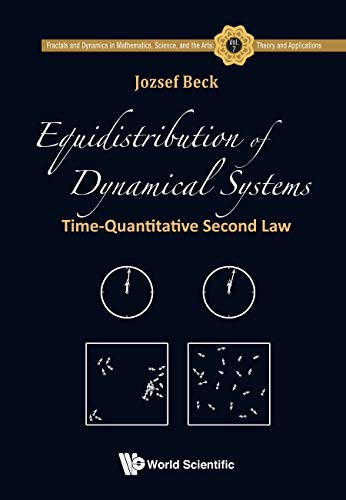
- Author: Jozsef Beck
- Publisher: World Scientific
- Publication Date: 10/05/2020
- Number of Pages: 448
- Format: Hardcover
- Price: $148.00
- ISBN: 978-9811225550
- Category: monograph
[Reviewed by Bill Satzer, on 05/09/2021]
The second law of thermodynamics, which says that the entropy of a closed physical system increases with time, is one of the basic takeaways from a first course in physics. Yet for all the attempts to formalize it in more precise terms, it has remained rather elusive. While most physicists are probably comfortable with the current status of the law, mathematicians and mathematical physicists have continued to look for more precise formulations and something in the nature of a rigorous proof.
This book is a research monograph where virtually all the results, published here for the first time, are due to the author. The background needed for it includes basic physics, advanced calculus, and some probability. It is not an easy read. Arguments, calculations, and estimates continue for many pages. It is accessible and carefully done, but it requires some devotion to work through.
The topic of the book in more general terms is the evolution in time of closed many-particle dynamical systems and estimation of typical evolution times for systems far from equilibrium. Very little in the literature has addressed questions like this. Boltzmann defined entropy in terms of the number of microstates of a system in thermal equilibrium, and Gibbs reinterpreted this in terms of probability distributions of the microstates. Later Shannon reformulated entropy in the context of information theory. The author finds these previous approaches incomplete, ambiguous, and certainly insufficiently rigorous.
Four crucial questions are posed. How should entropy be defined? How can the Second Law be expressed mathematically in a rigorous form that avoids some of the known paradoxes about irreversibility? How would such a theorem be proved? How can the Second Law be formulated to describe the time to reach equilibrium and the size of entropy increase as an explicit function of time?
It takes essentially the whole book for the author to formulate and prove a version of the Second Law that meets his requirements and answers these questions. He provides a justification for the basic postulate of thermodynamics, which says that the time evolution of closed systems with many degrees of freedom starts from non-equilibrium and proceeds to equilibrium while exhibiting an increase in entropy. He also demonstrates long-term stability of that equilibrium. The development of this argument requires the introduction of the ideas of micro-entropy, micro-equilibrium, and long-term stability. This requires considerable work and explains the length of the book,
The index is very sparse, but a number of references are cited. This is not intended as a textbook, so no exercises are provided. The task of the reader instead is to follow the author’s long path step by step.
Bill Satzer (bsatzer@gmail.com), now retired from 3M Company, spent most of his career as a mathematician working in industry on a variety of applications. He did his PhD work in dynamical systems and celestial mechanics.